If you've spent a few years with Windows 10, you've probably mastered the basic actions, which means you're reasonably productive. But some of the most interesting productivity boosters are not immediately obvious. That's especially true for new features that Microsoft adds as part of a feature update. If you're not paying attention to the release notes, you might not notice the new stuff.
That's the point of this post, where I've assembled five well-hidden Windows 10 features that I guarantee will save you time and help you avoid unnecessary clicks.
Snip & Sketch
Capture, mark up, and share any part of your screen
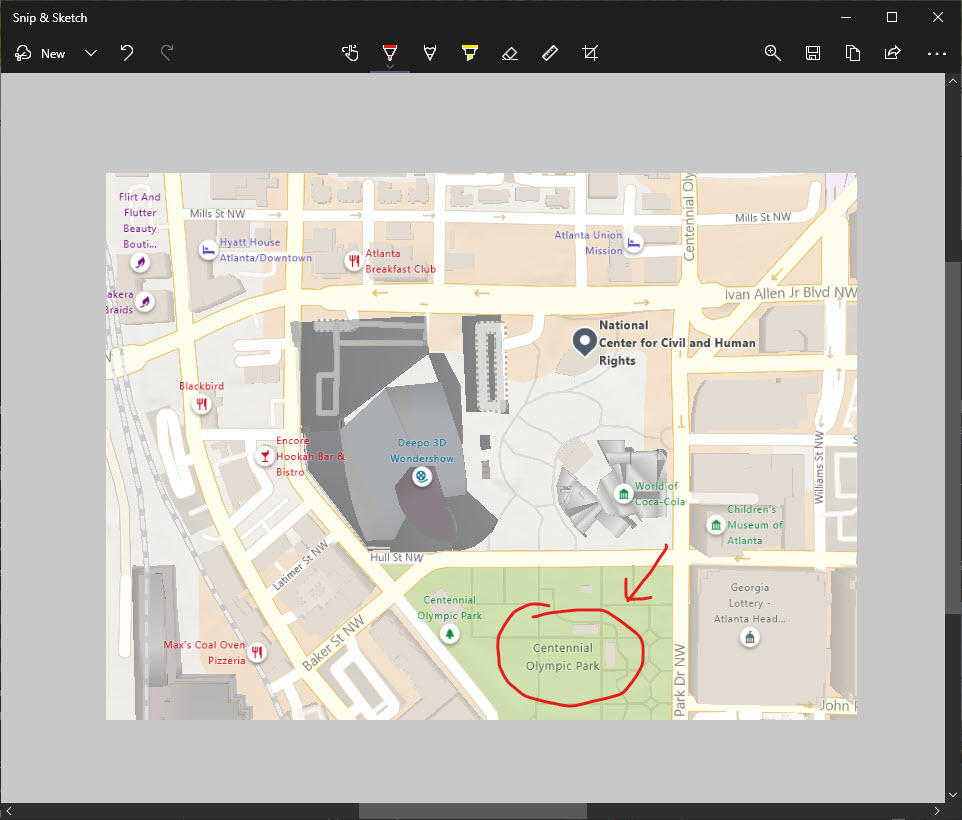
Use the annotation tools (pen, pencil, highlighter) to mark up a Snip & Sketch capture
If you're old enough to remember those early releases of Windows 10 from 2015 through 2018, you might have missed this feature, which didn't arrive for the masses until more than three years after the debut of Windows 10. (In version 1809, to be specific.) And it's improved steadily since that first version.
You'd be amazed at how often the ability to capture and share all or part of your screen comes in handy. Share a screenshot on Twitter? Check. Copy part of a map to help friends find you? Absolutely. Document something horrible posted by someone on social media? Sadly, yes.
Unlike MacOS, which hides this feature under some truly obscure keyboard shortcuts, everything's in one place in Windows 10. Press Windows key + Shift + S to shift into screenshot mode. Choose your preferred capture option (full screen, window, rectangle, or freeform) from the toolbar, and then press Enter. After you're done, you can open the app to crop, edit, annotate, paste, print, save, or share your capture.
You don't even have to remember that keyboard shortcut. You can click to open Action Center and then click or tap the Screen Snip option. Even easier? Use the Snip & Sketch Settings menu to redefine PrtScrn as the hotkey that opens Snip & Sketch.
Clipboard History
This essential Windows feature is no longer a one-trick pony
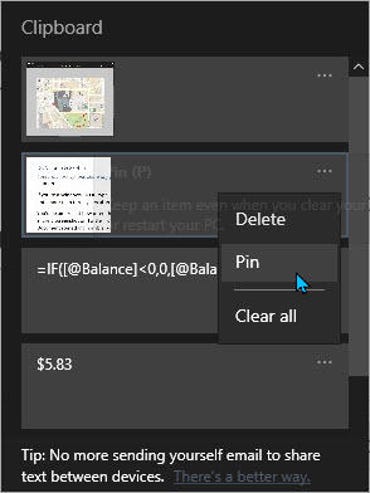
Click the ellipsis to display this shortcut menu and pin an item or manage the Clipboard History contents
Ctrl + C, Ctrl+ V. Even if you don't know any other keyboard shortcuts, you've certainly memorized these two, which copy a selection to the Windows Clipboard and paste it into a target app, respectively.
For years, the Clipboard was stubbornly dumb, with the ability to remember one and only one thing. Whatever you copied in most recently displaced the previous Clipboard contents, making for some maddening window-switching gymnastics to copy a group of items from one place to another.
That's all changed, with the addition of the Clipboard History feature in version 1809. This tool keeps the most recent 25 items on the Clipboard so you can reuse a copied item even if it's not the most recent. You can pin items to the list (boilerplate text or a logo, for example) and even sync clipboard contents between Windows devices.
To open Clipboard History, press Windows key + V. That's a keyboard shortcut worth remembering.
Bonus: Insider previews show a version (coming soon to a Windows 10 near you) that allows you to paste a Clipboard item as plain text and a new design that makes the Clipboard History part of the same picker you use to insert symbols and emoji.
Battery Report
Get the lowdown on your laptop battery
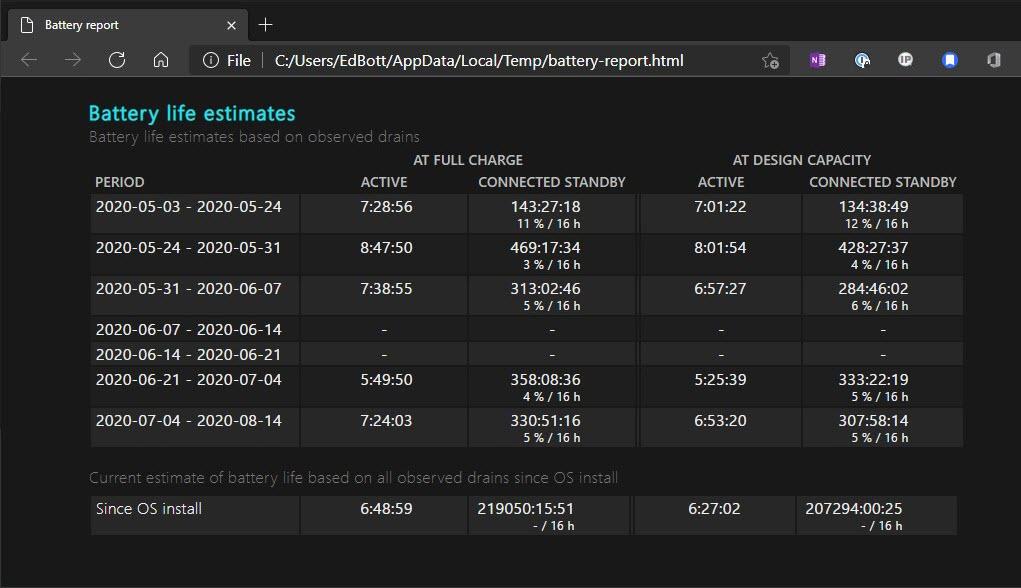
The full battery report tells you how long your laptop battery lasts in real-world usage
How long does your laptop run on battery power when you're on the go? I'm not talking about the ever-shifting estimates of remaining battery life that you get as you're working, but actual observed usage.
And as long as we're on the subject of battery power, do you know how much capacity your battery has right now? How does that current value compare to the original design specs for your laptop?
It's astonishing to think that all of these crucial bits of information are so well hidden. Thankfully, Windows 10 allows you to get answers to both questions in an extremely readable report. The only downside is that you need to use a slightly obscure command-line option to generate the report.
- Right-click Start, click Command Prompt (Admin), and say yes to the User Account Control prompt. (If you see a PowerShell menu item where Command Prompt normally appears, open a PowerShell [Admin] session and then type cmd and press Enter.)
- At the command line, type cd %userprofile%\Documents and press Enter to change to your personal Documents folder.
- Type powercfg /batteryreport and press Enter. A status report will confirm you've saved the report to the current folder as an HTML file.
Now open File Explorer and double-click the saved Battery-report.html file in your Documents folder. It's packed with detailed historical information about battery usage, including a comparison of the design capacity for your battery versus the current capacity. The Battery Life Estimates table at the bottom lets you see the range of battery life you can expect from each charge based on historical performance.
Free OneDrive storage
You get 5 GB of cloud storage for no cost; use it for backup
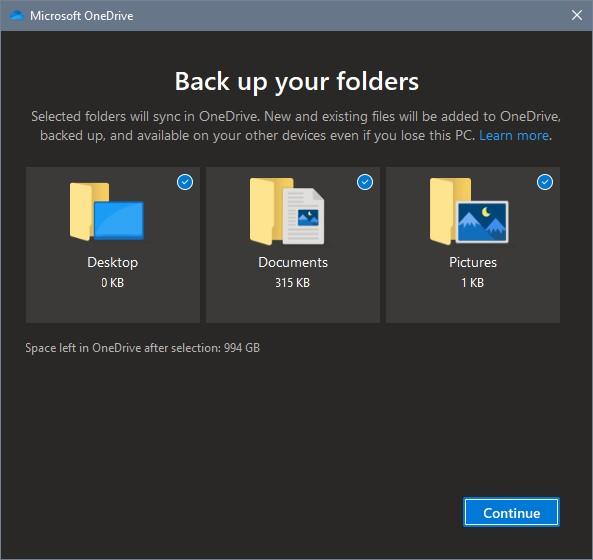
When you sign in to OneDrive for the first time, you get the option to back up these system folders to the cloud.
Microsoft's OneDrive cloud storage service is built into Windows 10. Sign in to the OneDrive client using a Microsoft account and you get 5 GB of storage for free. (If you have a Microsoft 365 account, that allocation goes up to one full terabyte.) If you don't have a Microsoft account, you can create one for free.
What can you do with those five gigabytes? The best option, as far as we're concerned, is to allocate that space to cloud backup. Windows 10 makes it easy to do that. When you sign in for the first time, you're given the option to redirect three core system folders -- Documents, Downloads, and Photos -- to OneDrive. Click OK, and all three of those folders are automatically copied to the cloud and synced automatically.
As we've recommended before, you can combine this cloud backup strategy with a local backup to create a nearly foolproof system for protecting the files you care about most. (For details, see "PC and Mac backup: How to protect your data from disaster.")
Connect a USB drive or removable storage and turn on File History (Settings > Update & Security > Backup) to build a comprehensive backup strategy.
Touchpad shortcuts
If you have a Precision Touchpad, you can do much more than point and click
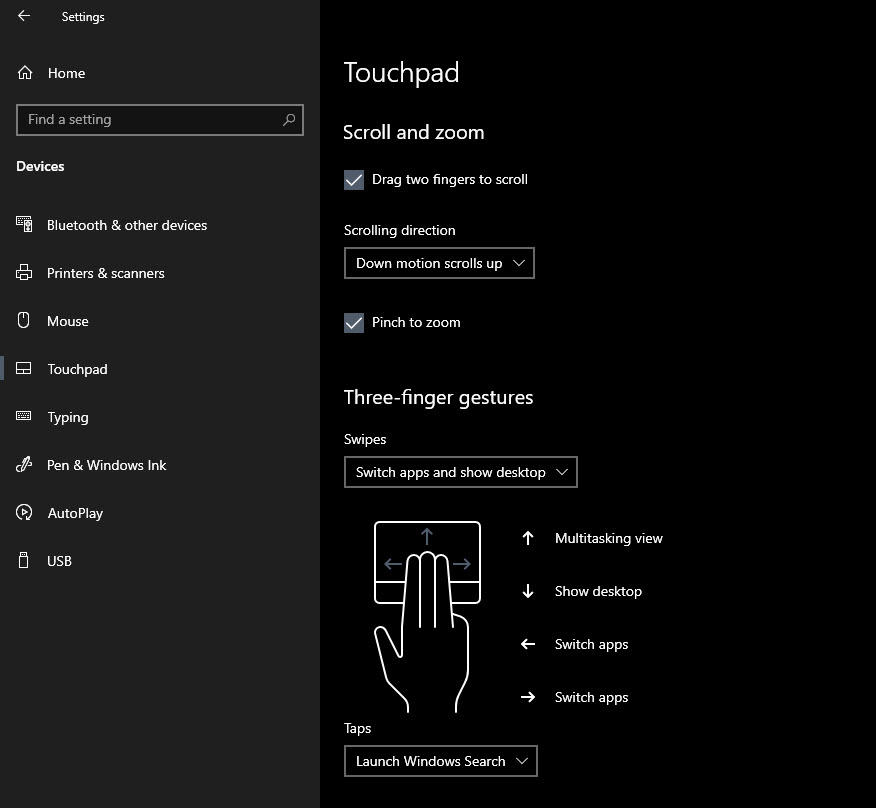
These gestures are fully customizable so you can change the four-finger swipe to control audio and volume if you prefer
How can I put this delicately? Trackpads on Windows PC used to, um, suck. They sucked like the world's most powerful bilge pump.
And then along came the Precision Touchpad and, holy moley, these pointing devices became downright sophisticated. Today, if a laptop doesn't have a Precision Touchpad, it's off my "OK to buy" list.
Fortunately, most modern Windows 10 PCs have gotten with the program. To see whether your Windows 10 laptop has a Precision Touchpad, go to Settings > Devices > Touchpad and look at the top of the page. If you see the message "Your PC has a precision touchpad," you're good to go.
On that same page you can see and edit all the shortcuts built into Windows 10. The default settings include three- and four-finger gestures that let you switch between apps and desktops easily. It's worth spending some time on these shortcuts. You'll be repaid impressively in the long run.
My favorite is the three-finger swipe, which lets you switch into and out of Task View with a swipe up or down (the same as if you press Alt+Tab). You can use a two-finger tap to right-click, and redefine gestures to suit your preferences. If you don't use multiple desktops, for example, you might want to redefine those gestures to control your audio source and volume.
"really" - Google News
April 05, 2021 at 07:00PM
https://ift.tt/39GHffy
Five Windows 10 features you really should be using - ZDNet
"really" - Google News
https://ift.tt/3b3YJ3H
https://ift.tt/35qAk7d
Bagikan Berita Ini














0 Response to "Five Windows 10 features you really should be using - ZDNet"
Post a Comment